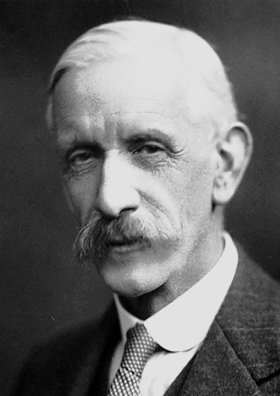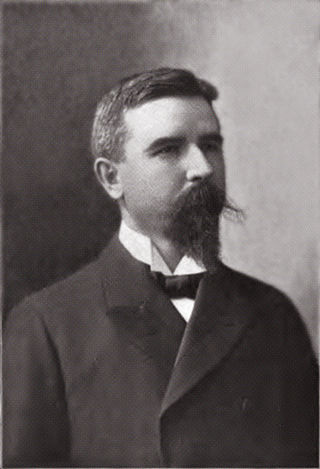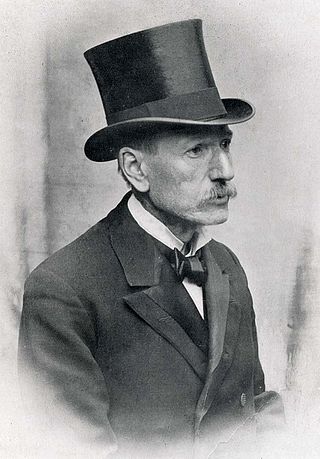Philip Bovier Hawk | |
|---|---|
 | |
| Born | July 18, 1874 |
| Died | September 13, 1966 |
| Occupation(s) | Biochemist, nutritionist |
Philip Bovier Hawk (July 18, 1874 - September 13, 1966) was an American biochemist, nutritionist, and amateur tennis player.
Philip Bovier Hawk | |
|---|---|
 | |
| Born | July 18, 1874 |
| Died | September 13, 1966 |
| Occupation(s) | Biochemist, nutritionist |
Philip Bovier Hawk (July 18, 1874 - September 13, 1966) was an American biochemist, nutritionist, and amateur tennis player.
Hawk was born in East Branch, New York. He studied at Wesleyan University, where he obtained his B.S. degree in 1898. [1] He worked as an assistant to Wilbur Olin Atwater in nutrition research at Wesleyan University (1898–1900). [1]
Hawk studied physiological chemistry at Sheffield Scientific School and obtained his M.S. in 1902 and Ph.D. from Columbia University College of Physicians and Surgeons in 1903. [2] He taught at physiological chemistry the University of Illinois and toxicology at Philadelphia's Jefferson Medical College. [3] Hawk was assistant professor of physiological chemistry at University of Pennsylvania (1903-1907). [2]
He was the author of the influential book Practical Physiological Chemistry published in 1907 that went through many editions. [4] [5] It contained biochemical methods and preparations that were used as laboratory exercises by medical students for more than half a century. [2] Its thirteenth, "Golden Anniversary Edition" was published in 1954. [6]
An expert in nutrition, he founded the Food and Drug Research Laboratories in 1922. [3] His research was successful and the laboratory moved to New York City and was incorporated in 1926 as the Food Research Laboratories. [1] His book Streamline for Health is a debunking of fad diets of his day, such as the Hay diet. Hawk was a member of the American Association for the Advancement of Science, American Medical Association, American Chemical Society, the American Philosophical Society, [7] and the American Physiological Society. [1]
Hawk was an experienced tennis player. He was a singles semifinalist at the Cincinnati Open in 1908 and won singles titles at the state championships of Delaware (1905), and Connecticut (1907, 1908 and 1909). He was a veteran champion of the United States from 1921 to 1923. [1] He was president of the West Side Tennis Club. Hawk married his second wife Gladys Taylor Lynch in 1923. [1]

Justus Freiherr (Baron) von Liebig was a German scientist who made major contributions to the theory, practice, and pedagogy of chemistry, as well as to agricultural and biological chemistry; he is considered one of the principal founders of organic chemistry. As a professor at the University of Giessen, he devised the modern laboratory-oriented teaching method, and for such innovations, he is regarded as one of the greatest chemistry teachers of all time. He has been described as the "father of the fertilizer industry" for his emphasis on nitrogen and minerals as essential plant nutrients, and his popularization of the law of the minimum, which states that plant growth is limited by the scarcest nutrient resource, rather than the total amount of resources available. He also developed a manufacturing process for beef extracts, and with his consent a company, called Liebig Extract of Meat Company, was founded to exploit the concept; it later introduced the Oxo brand beef bouillon cube. He popularized an earlier invention for condensing vapors, which came to be known as the Liebig condenser.

Harvey Washington Wiley was an American chemist who advocated successfully for the passage of the landmark Pure Food and Drug Act of 1906 and subsequently worked at the Good Housekeeping Institute laboratories. He was the first commissioner of the United States Food and Drug Administration.

Sir Frederick Gowland Hopkins was an English biochemist who was awarded the Nobel Prize in Physiology or Medicine in 1929, with Christiaan Eijkman, for the discovery of vitamins. He also discovered the amino acid tryptophan, in 1901. He was President of the Royal Society from 1930 to 1935.
William Cumming Rose was an American biochemist and nutritionist. He discovered the amino acid threonine, and his research determined the necessity for essential amino acids in diet and the minimum daily requirements of all amino acids for optimal growth.

Jean Mayer was a French-American scientist best known for his research on the physiological bases of hunger and the metabolism of essential nutrients, and for his role in shaping policy on world hunger at both the national and international levels. As a professor at the Harvard School of Public Health, Mayer directed a laboratory that did groundbreaking work on the hypothalamic regulation of obesity and various metabolic disorders. In 1968-69, having worked as an adviser to the World Health Organization and UNICEF, he was appointed principal organizer and chair of the first White House Conference on Food, Nutrition, and Health. At Harvard University, he served as Master of Dudley House before leaving in 1976 to become the tenth President of Tufts University in Medford, Massachusetts, where he is given credit for having brought about an unprecedented rise in the university's national reputation. He died unexpectedly on January 1, 1993.

Russell Henry Chittenden was an American physiological chemist. He conducted pioneering research in the biochemistry of digestion and nutrition.
Nutritional science is the science that studies the physiological process of nutrition, interpreting the nutrients and other substances in food in relation to maintenance, growth, reproduction, health and disease of an organism.
Bernard L. Oser was an American biochemist and food scientist who was involved in vitamin analysis.

Sir Charles James Martin was a British scientist who did seminal work on a very wide range of topics including snake toxins, control of body temperature, plague and the way it was spread, dysentery, typhoid and paratyphoid, nutrition and vitamin deficiencies, proteins, and myxomatosis as a means of controlling rabbit populations. He was a director of the Lister Institute of Preventive Medicine, serving from 1903 to 1930.

Andrea Carlo Francisco Rabagliati was a physician and author of books on dietary practice.

Wilbur Olin Atwater was an American chemist known for his studies of human nutrition and metabolism, and is considered the father of modern nutrition research and education. He is credited with developing the Atwater system, which laid the groundwork for nutrition science in the United States and inspired modern Olympic nutrition.

Francis Gano Benedict was an American chemist, physiologist, and nutritionist who developed a calorimeter and a spirometer used to determine oxygen consumption and measure metabolic rate.

Otto Knut Olof Folin was a Swedish-born American chemist who is best known for his groundbreaking work at Harvard University on practical micromethods for the determination of the constituents of protein-free blood filtrates and the discovery of creatine phosphate in muscles.

John Yudkin FRSC was a British physiologist and nutritionist, and the founding Professor of the Department of Nutrition at Queen Elizabeth College, London.
Muriel Emma Bell was a New Zealand nutritionist and medical researcher.

Fredrick John Stare was an American nutritionist regarded as one of the country's most influential teachers of nutrition.
Franklin Church Bing was an American biochemist, advisor and archivist. He was born in the United States. He got his PhD in the physiological chemistry department of Yale University in 1930. After that he joined the Western Reserve University between 1929 and 1936 and became a faculty member in the department of Biochemistry. After many years of studying, in later career, he joined the American Medical Association (AMA) and became a scientific researcher from 1936. Then between 1943 and 1950, Bing worked for the American Institute of Baking in Chicago. From 1950 to 1952, he worked as an advisor to the Delaney Committee of the United States House of Representatives. Since then, he has become an independent food and drug advisor for private businesses and government agencies. In 1985, Franklin Church Bing became an archivist and worked for the American Institute of Nutrition. At the same time, he wrote several biographies for many nutritionists. Franklin Church Bing was a nutritionist, scientist and a chemist and he had studied and made many contributions to these related fields during his whole life.
Alexander Haig was a Scottish physician, dietitian and vegetarianism activist. He was best known for pioneering the uric-acid free diet.

Elmer Lee was an American physician and advocate of natural hygiene and vegetarianism. He was the founder and editor of the health magazine Health Culture.